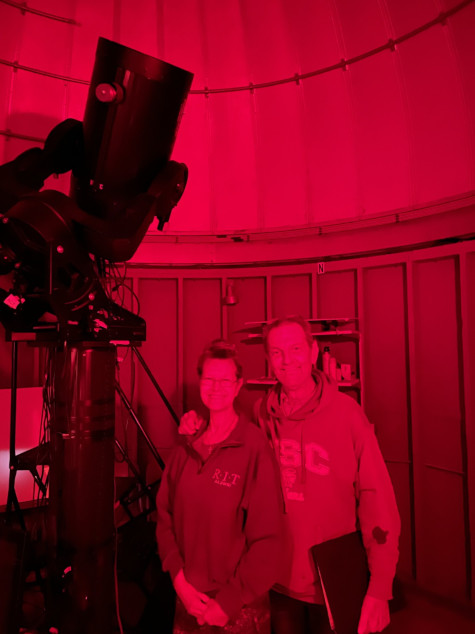
On the night of Jul 25/26, 2025, under fair conditions, I acquired a short set of images of the recurrent nova T CrB. This star undergoes outbursts at long intervals of 80 years or so. Its next outburst is predicted to occur soon (but then again, it was also predicted to occur during 2024), and so I've joined the crowd who are monitoring it.
I only had an hour or two between a public event and clouds, but I was able to acquire some data and make a simple test of guiding. No outburst.
Earlier in the evening, an amateur astronomer in the area who is hoping to bring his telescope back to life after a hiatus came to visit. We talked about telescopes and observing, and viewed M13 and some planetary nebulae in the 12-inch.

This recurrent nova brightens by about 8 magnitudes (!), from V = 10 to about V = 2, around every 80 years. Will we see another outburst THIS summer?
These observations involved:
Notes from the night:
I think the stars drift to East on the images, meaning telescope is tracking to West too rapidly. Maybe I should check the tracking rate and slow it down a bit.
The picture below shows a cropped image of the field of T CrB from Jun 14/15, 2024. The field of view is about 20 arcminutes across.
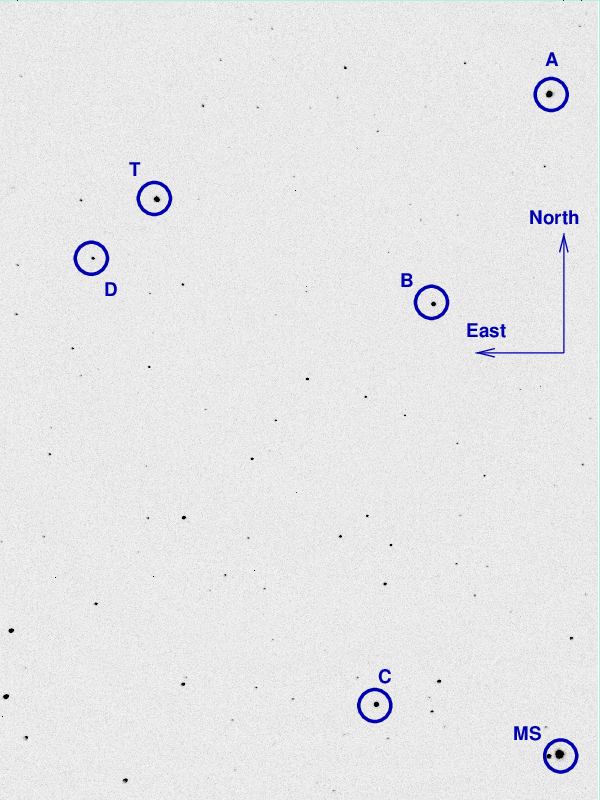
I've marked the location of several comparison stars, with magnitudes and names taken from the AAVSO's table X40237AAS. Note that the magnitudes listed for stars "A" and "B" have changed from the ones I listed in last year's notes.
star name B V
------------------------------------------------------
A 000-BJS-901 11.096 10.554
B 000-BBW-805 11.779 11.166
C 000-BPC-198 13.049 12.336
--------------------------------------------------------------------------
When the target is centered, the finder TV shows this field:
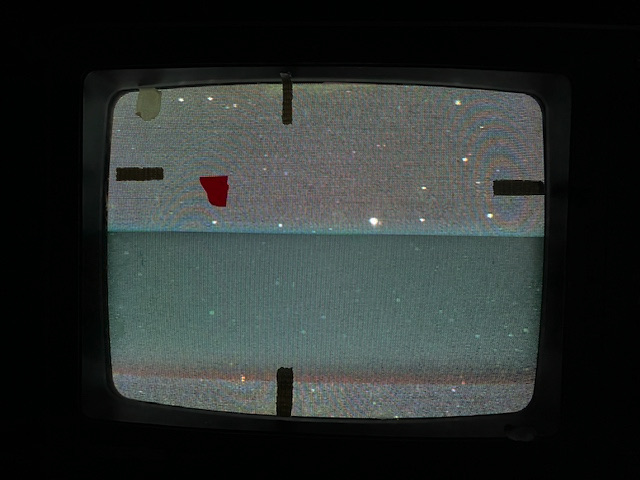
Here's the sky background over the course of the run.
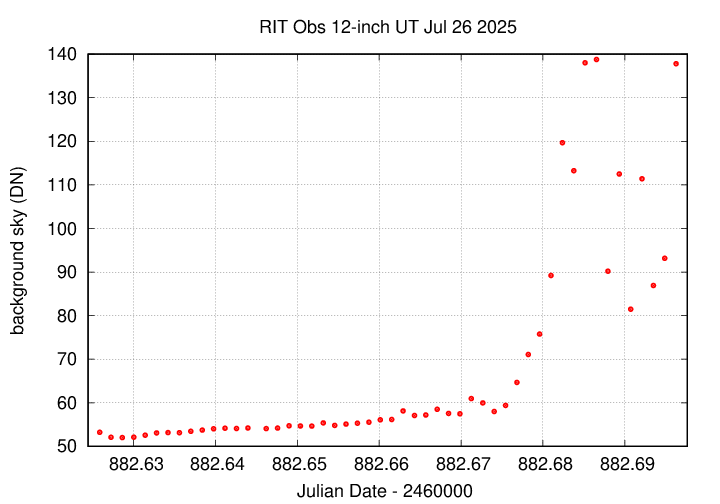
The FWHM was pretty steady, but had large scatter.
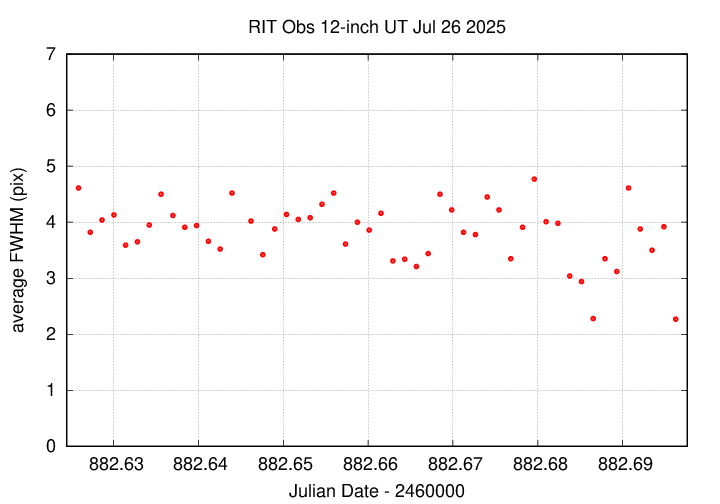
The graph below shows changes in the photometric zeropoint of an ensemble solution of the instrumental magnitudes over the course of the run. Note late clouds.

Using aperture photometry with a radius of 7 pixels in V filter (binned 4x4, each pixel is 1.036 arcsec, so a radius of 7.3 arcsec), and 7 pixels in B filter (binned 4x4, each pixel is 1.036 arcsec, so a radius of 7.3 arcsec), I measured the instrumental magnitudes of a number of reference stars and the target. Following the procedures outlined by Kent Honeycutt's article on inhomogeneous ensemble photometry, I used all stars available in each image to define a reference frame, and measured each star against this frame.
Sigma-vs-mag plots show that the floor in V-band was about 0.008 mag, which is not very good. In B-band, it was 0.010, also not great.
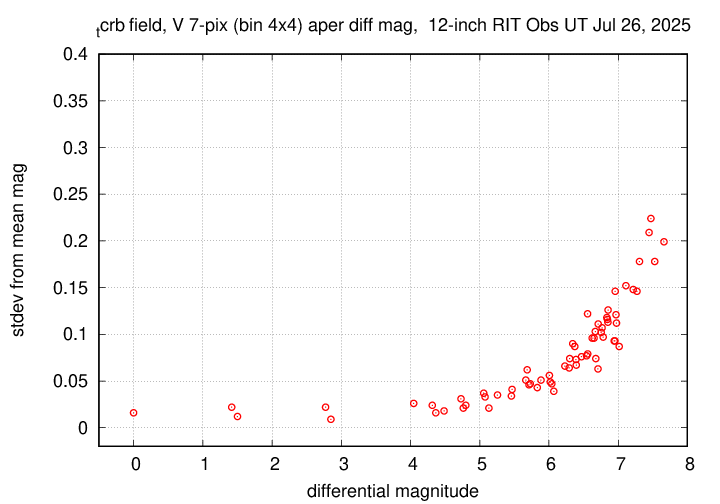
The measurements show that the target is still in quiescent phase.
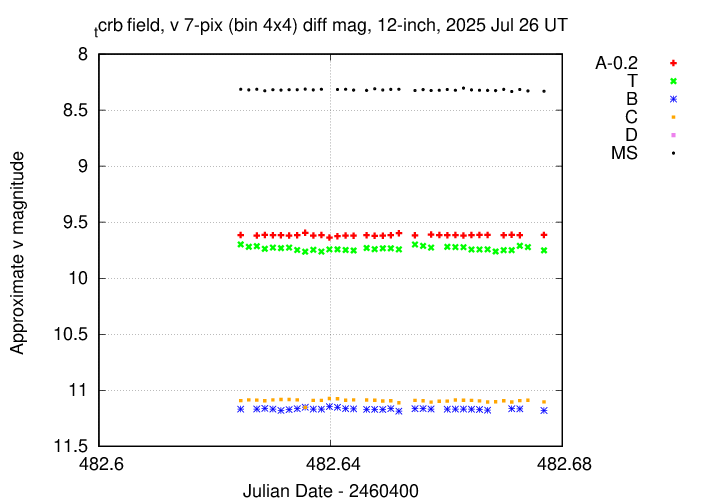
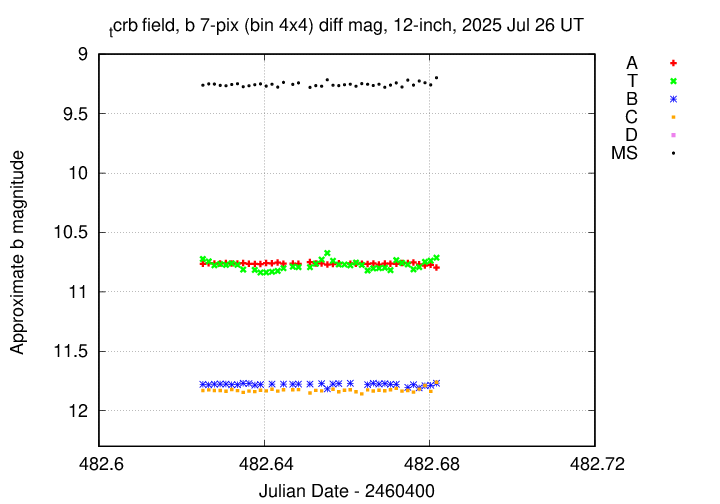
I've submitted these measurements to the AAVSO.